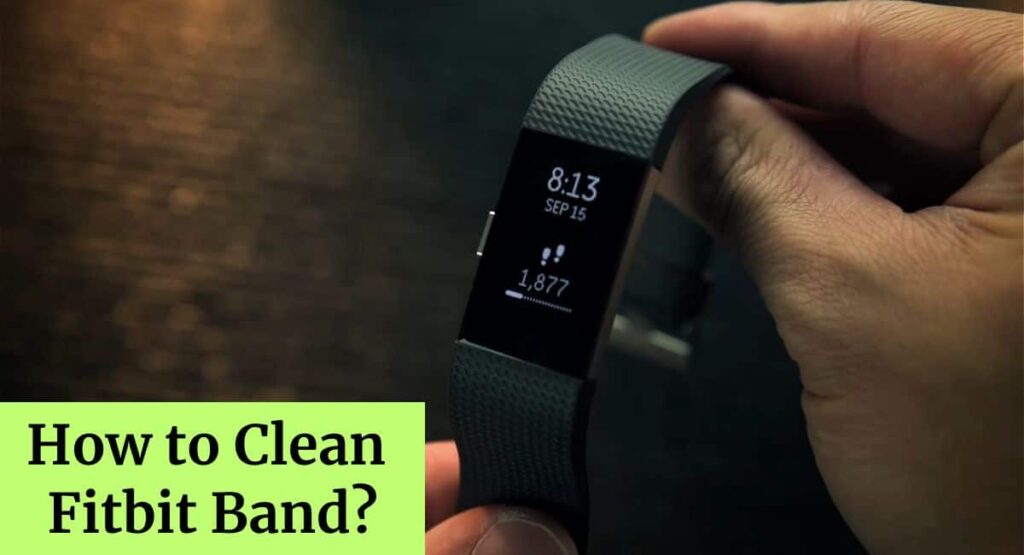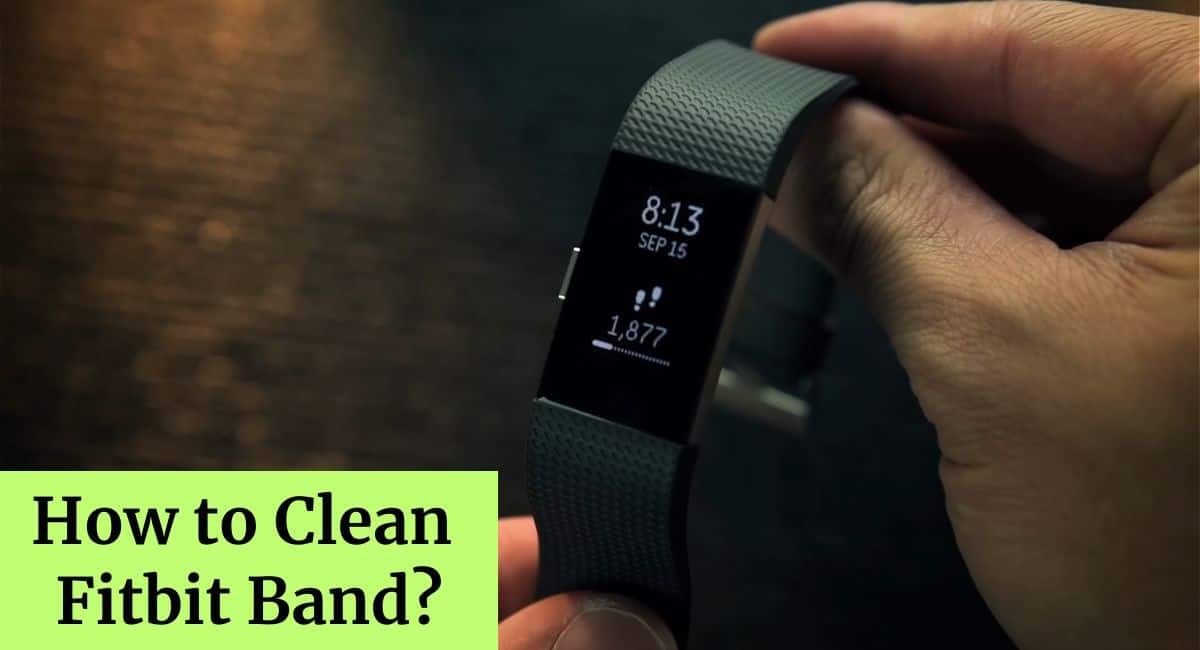Fitbit is a popular brand that offers a range of fitness trackers and smartwatches to help individuals monitor their physical activities and health goals. While these devices are designed to be durable and sweat-resistant, over time, the Fitbit band can accumulate dirt, sweat, and other debris. Cleaning your Fitbit band regularly not only keeps it looking fresh but also ensures hygiene and longevity.
Here, we will guide you through the process of How to Clean Fitbit Band effectively. So, keep reading this article for complete information.
How to Clean Fitbit Band

Fitbit bands are made of various materials, such as silicone, elastomer, or fabric, and can come in contact with sweat, oils, and dirt during daily use. Regular cleaning not only removes these impurities but also prevents skin irritation and keeps your Fitbit band smelling fresh.
Why Clean Your Fitbit Band?
Cleaning your Fitbit band is essential for several reasons. Firstly, sweat and dirt can accumulate on the band, leading to an unpleasant odor and potential skin irritation.
Secondly, the accumulation of debris can affect the band’s functionality and comfort. Lastly, maintaining a clean band enhances its overall appearance and prolongs its lifespan.
Preparing for Cleaning
Before you start cleaning your Fitbit band, gather the following items –
- A clean, lint-free cloth
- Mild soap or gentle liquid detergent
- Warm water
- Rubbing alcohol (isopropyl alcohol)
- Anti-bacterial wipes (optional)
- Soft-bristled toothbrush (optional)
Also Read: Water Lock on Fitbit
How to Clean Fitbit Band
Here are 4 ways to clean your Fitbit Band –
1. Gentle Soap and Water
One of the simplest and most effective ways to clean your Fitbit band is by using gentle soap and water. Follow these steps –
- Remove your Fitbit device from the band.
- Rinse the band with warm water to remove loose dirt and debris.
- Apply a small amount of mild soap or liquid detergent to the cloth.
- Gently scrub the band with the cloth, focusing on areas with stains or dirt buildup.
- Rinse the band thoroughly with warm water to remove any soap residue.
- Dry the band with a clean, lint-free cloth or allow it to air dry completely before reattaching your Fitbit device.
2. Rubbing Alcohol
Rubbing alcohol is effective in removing oils and disinfecting your Fitbit band. Follow these steps –
- Dampen a clean cloth with rubbing alcohol (isopropyl alcohol).
- Gently wipe the entire surface of the band, paying extra attention to areas with stains or stickiness.
- Allow the band to air dry completely before reassembling your Fitbit device.
3. Anti-Bacterial Wipes
Anti-bacterial wipes are convenient for quick cleaning and disinfecting. Follow these steps –
- Take an anti-bacterial wipe and gently wipe the entire surface of the band.
- Pay extra attention to areas with stains or stickiness.
- Allow the band to air dry or use a clean, lint-free cloth to dry it.
4. Ultrasonic Cleaner
If you have access to an ultrasonic cleaner, it can effectively deep clean your Fitbit band. Follow these steps –
- Fill the ultrasonic cleaner with warm water.
- Place your Fitbit band in the cleaner.
- Turn on the ultrasonic cleaner and let it run for the recommended duration.
- Remove the band from the cleaner and rinse it thoroughly with warm water.
- Dry the band with a clean, lint-free cloth or allow it to air dry completely.
If you want to watch the video on cleaning the Fitbit Band then you should watch the video given below –
Drying and Maintenance
After cleaning your Fitbit band, it’s crucial to ensure it is completely dry before reassembling your Fitbit device. Excess moisture can cause damage to the device and lead to discomfort.
Additionally, it is recommended to follow these maintenance tips –
- Avoid wearing the Fitbit band while swimming or showering to prevent excessive exposure to water.
- Clean the band regularly, especially after intense workouts or exposure to dirt and sweat.
- Store your Fitbit device and band in a clean and dry place when not in use.
Also Read: Is Fitbit Watch Waterproof
Tips for Long Lasting Cleanliness
To maintain the long-lasting cleanliness of your Fitbit band, consider the following tips –
- Remove your Fitbit device from the band before cleaning to avoid damage.
- Avoid using harsh chemicals, abrasive cleaners, or bleach, as they may damage the band’s material.
- Be gentle while cleaning to prevent stretching or damaging the band.
- If your Fitbit band is not removable, clean it while wearing gloves to protect your skin from cleaning agents.
Wrapping Up
This article is all about How to Clean Fitbit Band. Regularly cleaning your Fitbit band is essential for maintaining hygiene, comfort, and appearance. By following the cleaning methods mentioned above and adopting the recommended maintenance tips, you can keep your Fitbit band clean and fresh. Remember to clean it regularly to prevent dirt buildup and potential skin irritation.
I hope this article was helpful to you and if you still find any queries then you may ask in the comment box. For more information visit the Help and Support Page.
FAQ’s How to Clean Fitbit Band
How often should I clean my Fitbit band?
It is recommended to clean your Fitbit band at least once a week, or more frequently if it comes into contact with sweat, dirt, or other substances.
Can I use soap or detergent directly on my Fitbit band?
It is best to dilute mild soap or liquid detergent with water before applying it to the Fitbit band. Direct application may result in residue or damage.
Can I wear my Fitbit band while swimming?
Fitbit bands are generally water-resistant, but it is advisable to avoid wearing them while swimming to prevent prolonged exposure to water, which may affect their longevity.
Can I use cleaning agents other than those mentioned in the article?
It is recommended to stick to the cleaning methods outlined in this article to avoid damaging your Fitbit band. Harsh chemicals or abrasive cleaners can harm the band’s material.
Can I clean the Fitbit band with a washing machine?
Fitbit bands are not designed to be machine-washable. It is best to follow the cleaning methods mentioned in this article for optimal results.
